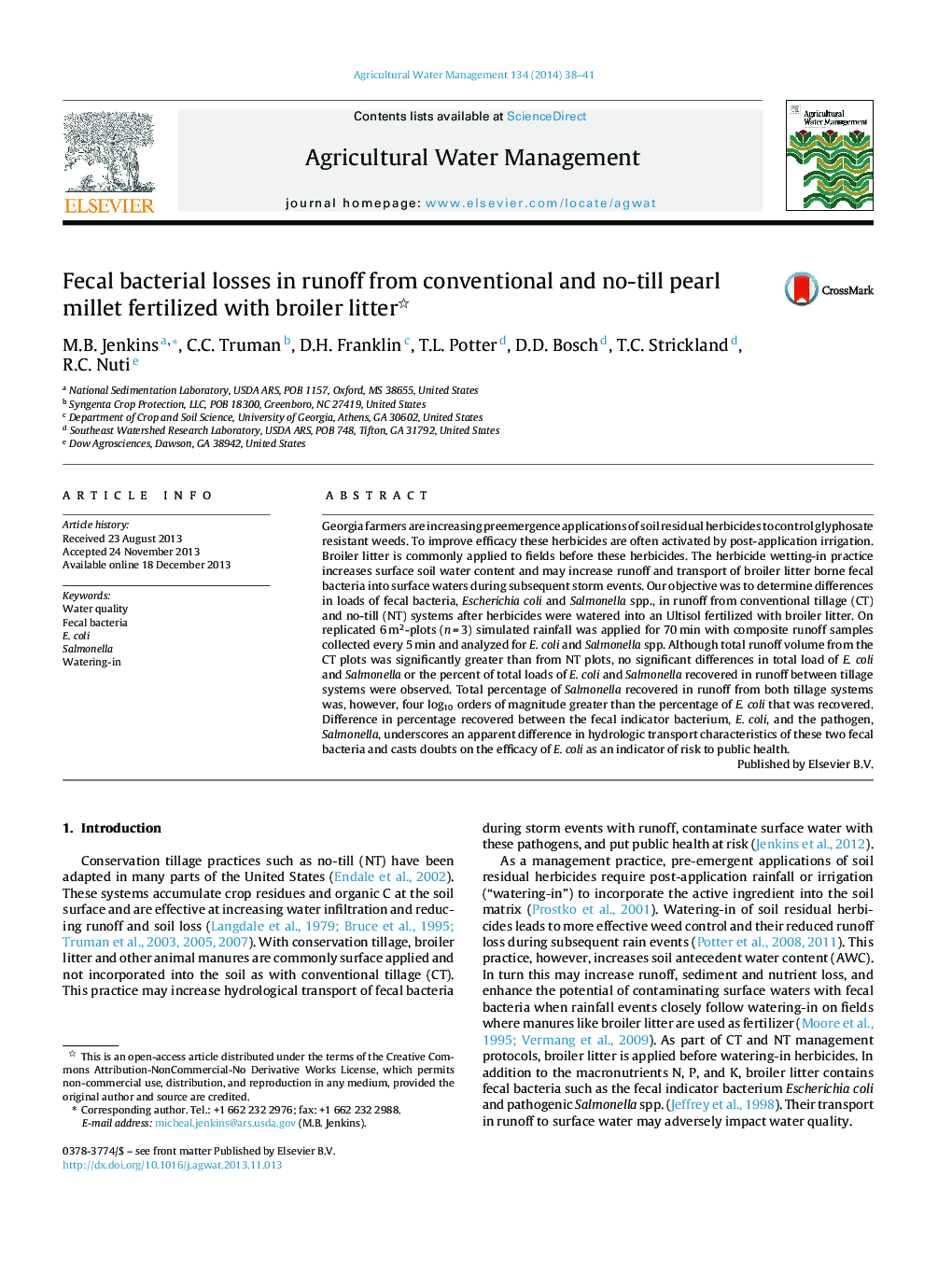| کد مقاله | کد نشریه | سال انتشار | مقاله انگلیسی | نسخه تمام متن |
|---|---|---|---|---|
| 4478745 | 1622945 | 2014 | 4 صفحه PDF | دانلود رایگان |
• Measured fecal bacteria in runoff from plots fertilized with broiler litter.
• Runoff volumes were greater for conventional tillage than no-till.
• Loads of E. coli and Salmonella in runoff were not different.
• Salmonella's percent recovery in runoff was 105-times greater than E. coli's.
• The efficacy of E. coli as an indicator of risk to public health is questionable.
Georgia farmers are increasing preemergence applications of soil residual herbicides to control glyphosate resistant weeds. To improve efficacy these herbicides are often activated by post-application irrigation. Broiler litter is commonly applied to fields before these herbicides. The herbicide wetting-in practice increases surface soil water content and may increase runoff and transport of broiler litter borne fecal bacteria into surface waters during subsequent storm events. Our objective was to determine differences in loads of fecal bacteria, Escherichia coli and Salmonella spp., in runoff from conventional tillage (CT) and no-till (NT) systems after herbicides were watered into an Ultisol fertilized with broiler litter. On replicated 6 m2-plots (n = 3) simulated rainfall was applied for 70 min with composite runoff samples collected every 5 min and analyzed for E. coli and Salmonella spp. Although total runoff volume from the CT plots was significantly greater than from NT plots, no significant differences in total load of E. coli and Salmonella or the percent of total loads of E. coli and Salmonella recovered in runoff between tillage systems were observed. Total percentage of Salmonella recovered in runoff from both tillage systems was, however, four log10 orders of magnitude greater than the percentage of E. coli that was recovered. Difference in percentage recovered between the fecal indicator bacterium, E. coli, and the pathogen, Salmonella, underscores an apparent difference in hydrologic transport characteristics of these two fecal bacteria and casts doubts on the efficacy of E. coli as an indicator of risk to public health.
Journal: Agricultural Water Management - Volume 134, 1 March 2014, Pages 38–41
